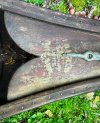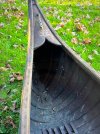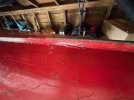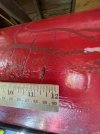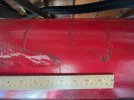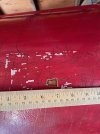Dan R.
Curious about Wooden Canoes
Hi All,
I'm making my second attempt at buying a wood/canvas canoe and have done much more research than on my first. Thanks mostly to the WCHA forums and vast documentation.
I have purchased and will be picking up what I believe is a B. N. Morris canoe. I was told that the first one a bought was a Morris but after getting it home and researching more, I realized it was not. It had also been fiberglassed so it is a bit of a project but that is for a different thread.
I will be picking the new canoe up on Friday but received some photos. I wanted to share what photos I have now to see if I can get confirmation that it is indeed a true B.N. Morris this time and any information that people might have. I have read on some posts that B.N. Morris canoes can be intermingled with Kennebecs or Veazies.
It supposedly does not have a serial number but has a partial deck logo.
It is 17 feet long with a 34" beam.
Thank you for the help!
Dan R.
I'm making my second attempt at buying a wood/canvas canoe and have done much more research than on my first. Thanks mostly to the WCHA forums and vast documentation.
I have purchased and will be picking up what I believe is a B. N. Morris canoe. I was told that the first one a bought was a Morris but after getting it home and researching more, I realized it was not. It had also been fiberglassed so it is a bit of a project but that is for a different thread.
I will be picking the new canoe up on Friday but received some photos. I wanted to share what photos I have now to see if I can get confirmation that it is indeed a true B.N. Morris this time and any information that people might have. I have read on some posts that B.N. Morris canoes can be intermingled with Kennebecs or Veazies.
It supposedly does not have a serial number but has a partial deck logo.
It is 17 feet long with a 34" beam.
Thank you for the help!
Dan R.

